
All photos and video used by permission from Northern Rangelands Trust
Kenya’s Lake Baringo area was a stronghold for Rothschild’s giraffes—also known as Baringo giraffes—until they were extirpated in the region from overhunting and lack of secure habitat. This story is a small part of a long-term plan to repopulate the Great Rift Valley with giraffes. But first, you have to understand something about the people who are making it happen.
The Ruko Community Conservancy (Ruko) of northern Kenya is a community-managed organization, owned by the pastoralist people who live there. It is one of 39 community conservancies in northern Kenya that are members of the Northern Rangelands Trust (NRT). Establishing the Conservancy brought together the Il Chamus and the Pokot people, two tribes that historically have not been friendly, but have united to establish peace, improve livelihoods, and conserve wildlife. The community developed a plan to reintroduce Rothschild’s giraffes Giraffa camelopardalis rothschildi to the region, and in 2011, they translocated a group of the giraffes to a peninsula on the eastern side of Lake Baringo.
TROUBLED WATERS
Lakes in Kenya’s Great Rift valley have been rising over the past 50 years, but unusually heavy rainfall since 2017 has exacerbated the problem. In addition to forcing the evacuation of homes, businesses, and farms, floodwaters encroached on habitat that wildlife depends on. Where there was initially plenty of space and food for the giraffes, Lake Baringo’s rising waters turned their peninsula into an island, stranding them. Then, over the last three years, a massive rise in the lake level flooded most of the island, leaving only a few species of trees for the giraffes to eat—and not enough of them.
The giraffes were hungry. “They were having reproductive problems—stillbirths and weak calves,” says Stephen Chege, B.V.M., M.Sc., a San Diego Zoo Wildlife Alliance (SDZWA) veterinarian and postdoctoral fellow working in northern Kenya. “Six calves born on the island all died—most, due to nutritional deficiencies.” Ruko conservancy rangers were transporting additional browse to the giraffes daily, but it became clear that the island could not support the giraffes. The community decided to translocate the giraffes to the mainland. But how?
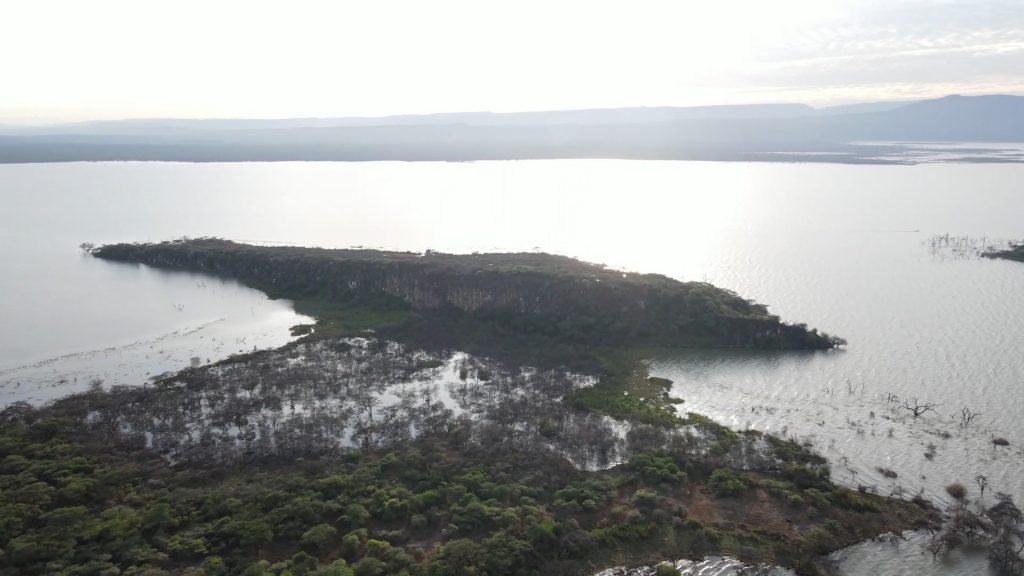
BUILDING A SOLUTION
The Ruko conservancy encompasses more than 109,000 acres (44,000-hectares), with plenty of room for giraffes to roam, but giraffes have not existed in this area in decades. “There’s no way you can just put an endangered species in such a large area,” explains Dr. Chege. To make sure the giraffes could find each other and to keep them safe, the Ruko community fenced a 4,400-acre (1,770-hectare) giraffe sanctuary, where Ruko rangers would be able to keep an eye on them.
The next challenge was ferrying the giraffes from the tiny island to their new home. The solution was a custom-built, steel barge with empty drums for buoyancy and tall, reinforced sides to keep the giraffes calm and safe. After testing the barge with human passengers, all that remained was to get the giraffes aboard. But immobilizing, restraining, and moving a giraffe in a rugged habitat is nerve-wracking. “It’s a very delicate and risky exercise.” said Dr. Chege. “When a giraffe is immobilized, it can fall onto rocks or in a ditch, or into the lake,” leading to injury. Early efforts meant overcoming these obstacles. And while animal welfare comes first, Dr. Chege says, “We also have to worry about human welfare. Giraffes can deliver very powerful kicks, and that can be very serious.”
Detailed planning and collaboration among the rangers at Ruko and teams at Kenya Wildlife Services and NRT ensured coordination and minimized risks. The first giraffe to leave the island was female Asiwa, in 2020. Rising waters had separated her from the other giraffes, stranding her on a small part of the island. After temporarily chemically immobilizing her, it took several members of the team holding leads an hour to safely guide her to the barge, avoiding trees and rocks along the way. “My happiest moment was when we opened the door to the barge, and she stepped inside,” says Dr. Chege, who admits that he didn’t actually relax until Asiwa was safely on the mainland. The voyage took about an hour.
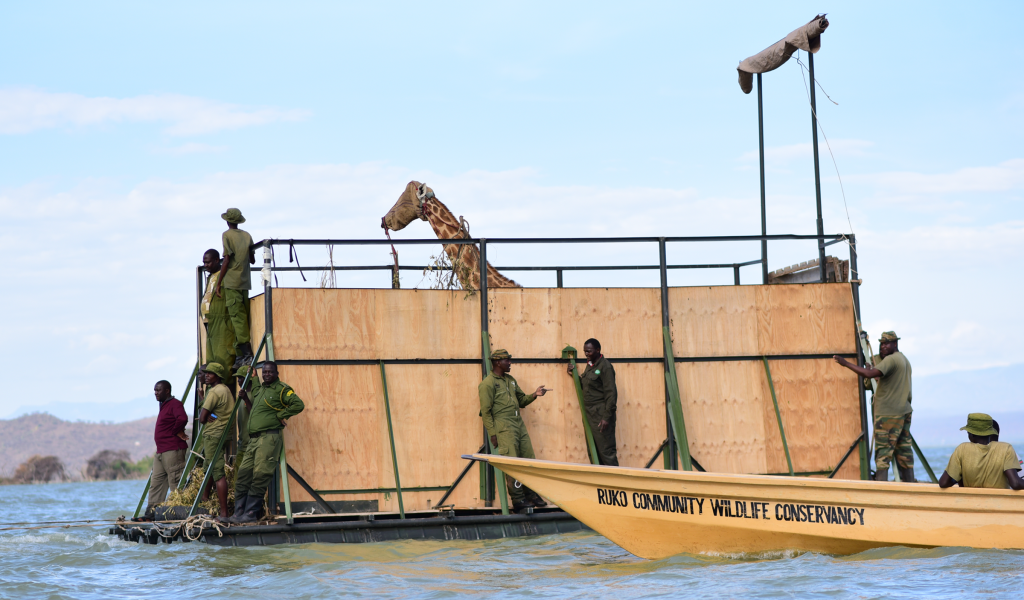
NECESSITY IS THE MOTHER OF INNOVATION
After moving a second giraffe in the same manner, the team decided to try an approach that would be less stressful for the giraffes (and the people moving them). What if they could get the giraffes to step onto the barge on their own, without having to use immobilization or restraint? They enticed the giraffes aboard by placing some of their supplemental food on the barge and leaving the gate open.
But not all the giraffes would board the barge—at least, not at first. “All our plans were impeded by the adult male, who would get in and block everybody else,” says Dr. Chege. The team decided it was time to move the male. Next time he stepped aboard, they quietly closed the barge gate behind him and headed for the mainland. No one knew for sure how he would react. “He was fine,” said Kieran Avery, B.V.Sc., M.R.C.V.S., M.K.V.B., director of natural resources management for Northern Rangelands Trust. “He didn’t even flinch—just kept feeding. We were surprised at how easy it was.” One by one, rangers moved two more giraffes to the mainland. “It became very easy,” says Dr. Chege, who credits the Ruko rangers with the success. “Led by the local community, we had a good team from Kenya Wildlife Services, NRT, and Ruko,” he says. (Watch the video below to see a giraffe moved from the flooded island to the Ruko giraffe sanctuary.)
The last four giraffes on the island made the trip to the mainland sanctuary in April 2021. “Time was running out in terms of forage for them to eat,” says Dr. Avery. In the end, the team temporarily chemically immobilized the last of the giraffes as they did Asiwa, to get them aboard. “The moves went so well. We were so lucky to get them done with no major incidents,” says Dr. Avery. “They are very happy giraffes now!”
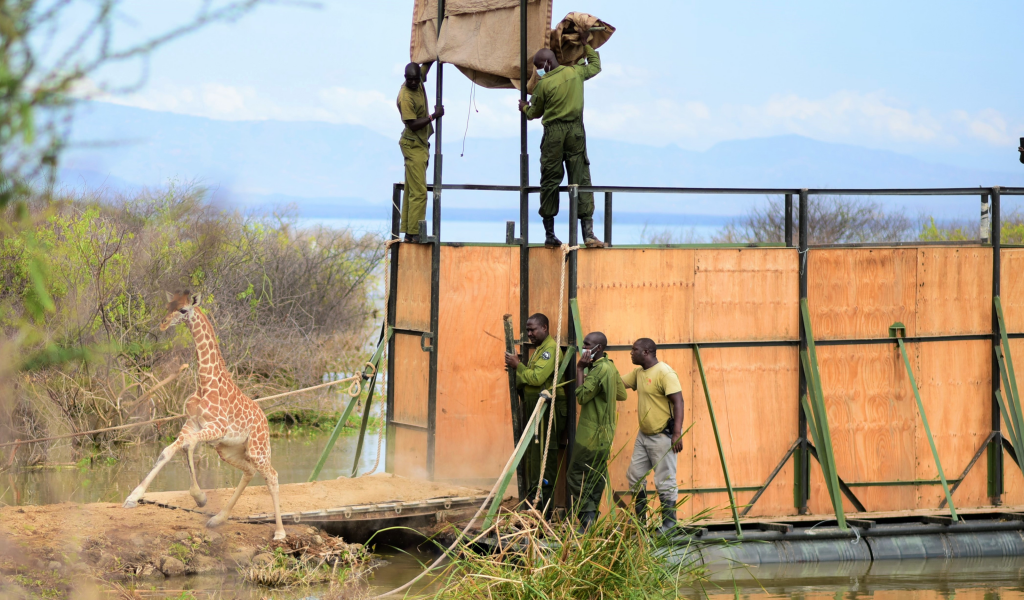
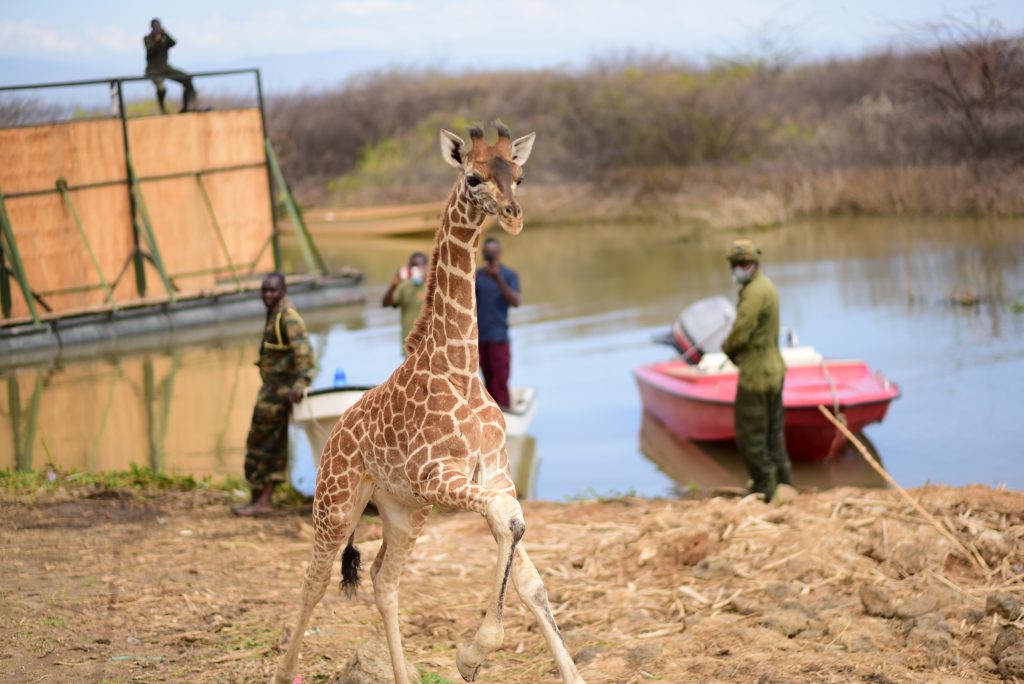
THE LONG GAME
The Ruko giraffes are thriving, feasting on several species of abundant trees. Jenna Stacy-Dawes is a Researcher in SDZWA’s Population Sustainability department who has worked alongside the Twiga Walinzi and the Ruko Conservancy ranger team to develop a plan to monitor the giraffes and ensure they are adjusting well to their new home. “Ruko rangers monitor the giraffes’ body condition and behavior, to make sure that they are adjusting well post-translocation, which is something that we adopted from behavior studies that have been developed for giraffes in zoos.” The monitoring mirrors what the animal care specialists at the Zoo and the Safari Park do, keeping watchful of how the giraffes are progressing.
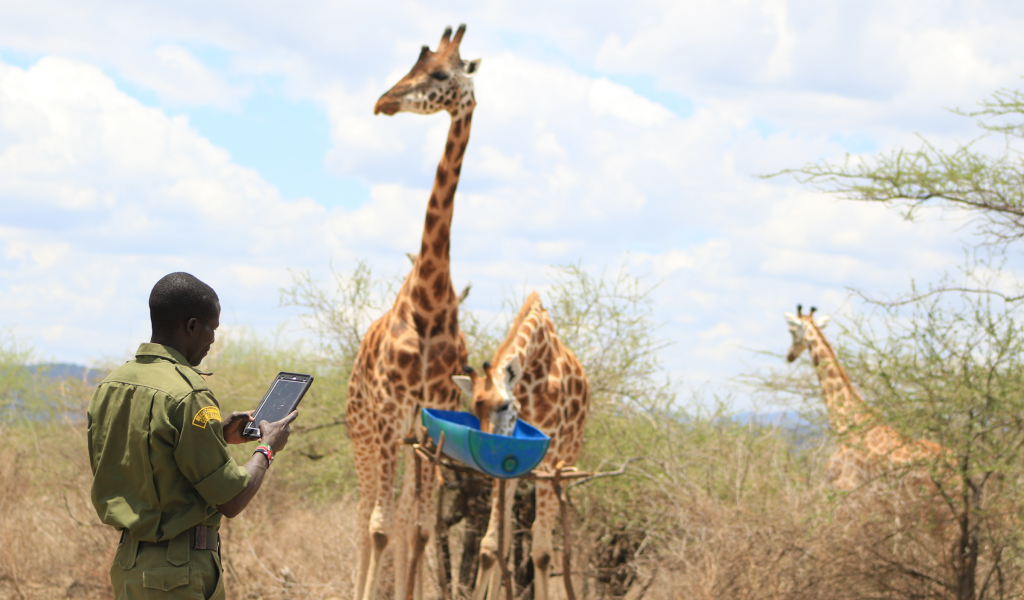
The relocation of giraffes to the Ruko Sanctuary is a shining example of how community action and conservation partnerships can drive efforts to safeguard an endangered species. But the people of Ruko know that this isn’t the end of the story. SDZWA scientist Kirstie Ruppert, Ph.D., who works with pastoralist communities in Kenya to promote coexistence between people and wildlife, says, “Giraffes on a boat—it’s exciting! But conservation is a long game.” The next goal is a breeding population of giraffes and working with the communities to build support, so this population of giraffes can eventually roam safely outside the protection of the fenced sanctuary.
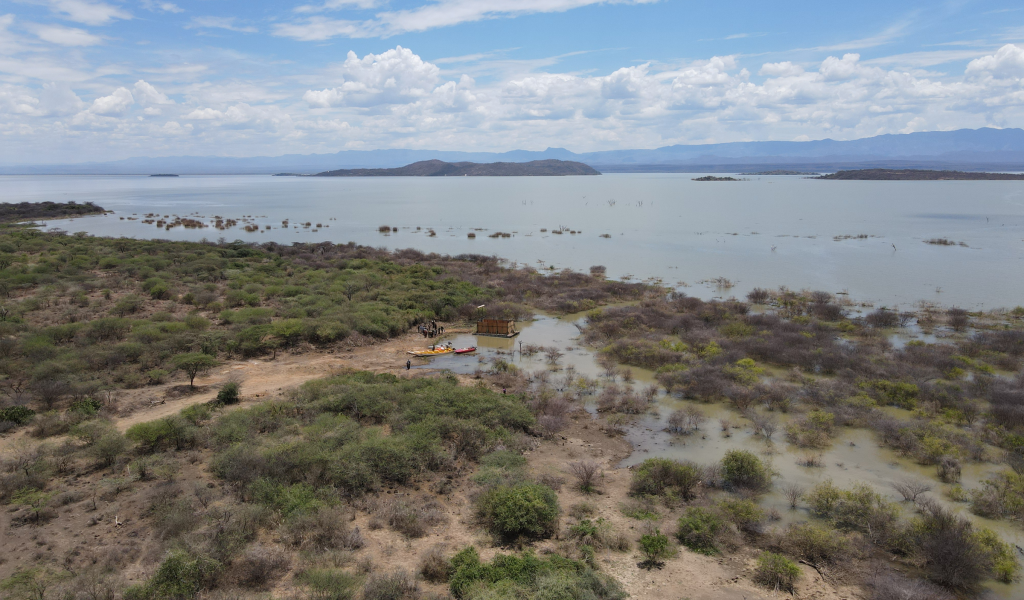
As their numbers grow, rangers will cautiously open the entire conservancy to them. The hope is that giraffe conservation and ecotourism will further enhance livelihoods and development projects for their community. Ruko community members look forward to the day when giraffes will again roam throughout the Great Rift Valley.
OUR PARTNERS AT RUKO
Kenya Wildlife Service
Northern Rangelands Trust
The Nature Conservancy
Save Giraffes Now




